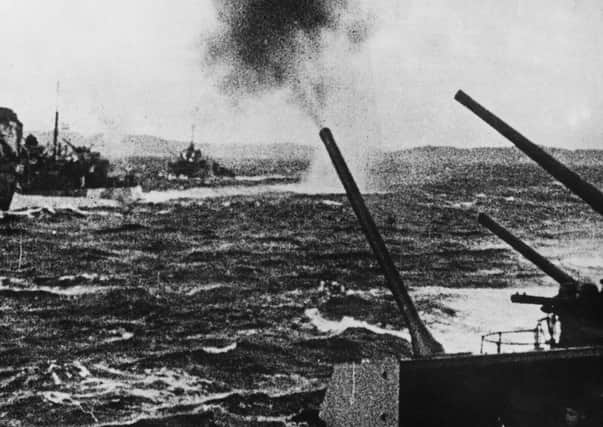Scots sea loch memorial for sailors on Arctic convoys planned


A permanent memorial will be erected in honour of those who transported vital supplies to Russia during the war from the sea loch where they set off.
Loch Ewe in Wester Ross was the base for more than half of the Arctic convoys going to the northern reaches of the Soviet Union with supplies.
Advertisement
Hide AdAdvertisement
Hide AdSir Winston Churchill described the missions the “worst journey in the world”.
Loch Ewe became a strategic gathering place for the Allies’ merchant fleets, and home to other defence and training facilities.
Now a series of interpretation sites and public artworks, including four figures, are planned to commemorate its role.
Heritage consultant Helen Avenell is co-ordinating the project, known as Blazing a Wartime Trail around Loch Ewe, for the local Russian Arctic Convoy Museum (RACM) in Aultbea.
She said: “George Milne, ex-chairman and long-time volunteer with RACM, realised the need to illuminate the hidden history of Loch Ewe’s wartime story and the crucial role that the Arctic Convoys played in the Second World War. For a long time this history remained hidden, specifically because of the Cold War.
“The landscape around Loch Ewe is littered with wartime remains, but for many people, they are an enigma.
“George and the team wanted to share the stories of how the local community and landscape was shaped by the war.”
During the war, the Arctic convoys sailed from the UK, Iceland and North America to ports in the Soviet Union, primarily Archangel and Murmansk.
Advertisement
Hide AdAdvertisement
Hide AdCargo included tanks, fighter planes, fuel, ammunition, raw materials and food.
There were 78 convoys between August 1941 and May 1945, taking supplies to the Soviet forces in the Arctic Circle.
About 1,400 merchant ships were involved in the missions, escorted by ships of the Royal Navy, Royal Canadian Navy, and the US navy.
Loch Ewe was a temporary base of the Home Fleet during the war years and was also used as an assembly point for convoys.
In total, 104 Allied merchant ships and 18 warships were sunk with the Arctic convoys – with 829 merchant mariners and 1,944 navy personnel were killed aboard them.
Russia lost 30 merchant ships and an unknown number of personnel.
Remains of the convoy’s port are still visible around the loch, including gun emplacements, anti-submarine boom defence system and even a cinema hall.
Many sailors spent years campaigning for a medal, a wish finally granted in 2012.